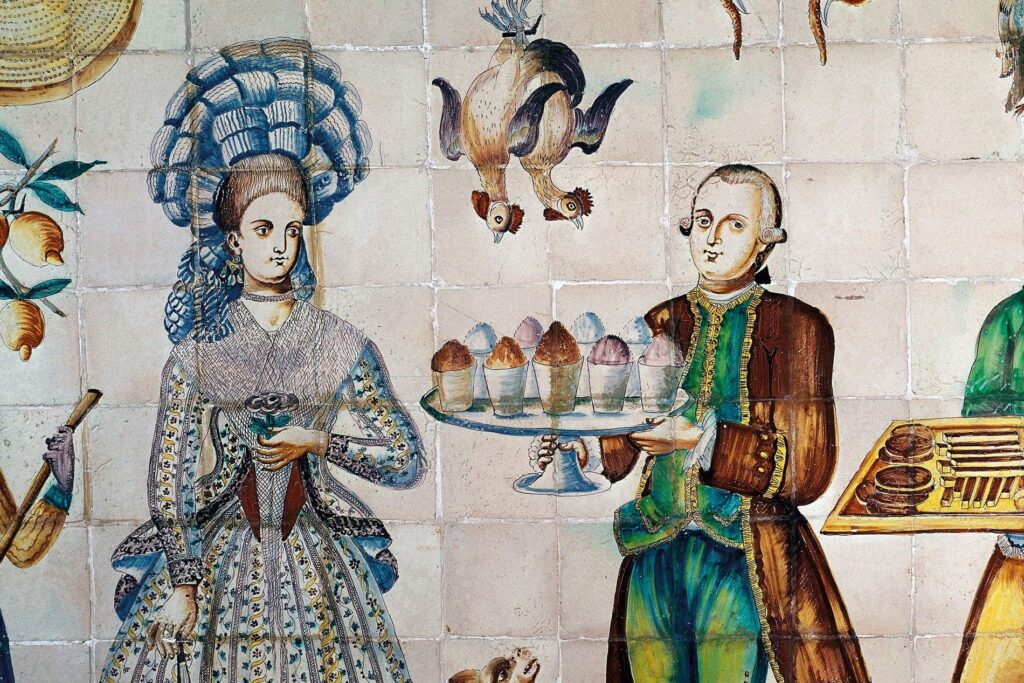
Ice cream is one of the world's most beloved desserts. It's creamy, sweet, and refreshing, making it the perfect treat for any occasion. But have you ever wondered how ice cream was first created? Well, get ready to go on a journey through history, as we explore the origins of this delicious dessert!
It all started thousands of years ago, in ancient China. Legend has it that the Chinese Emperor Tang, who ruled in the 7th century, was a big fan of frozen treats. He would have his servants gather ice and snow from the mountains, which he would then mix with fruit and honey to create a dessert that he called "milk ice." It was basically a proto-ice cream, and it was a big hit with the emperor's court.
But ice cream as we know it today didn't really take off until much later. In fact, it wasn't until the 16th century that the first real ice cream was created. And it wasn't in China, but in Italy. Yes, the Italians can claim credit for this one!
The story goes that a man named Ruggeri, who was a chef in the court of Catherine de' Medici, the Queen of France, was tasked with creating a new dessert for a royal banquet. Ruggeri decided to experiment with some of the frozen treats that were popular in Italy at the time, and he came up with a dessert that he called "gelato."
Now, gelato is actually a bit different from ice cream. It's made with more milk and less cream than traditional ice cream, which gives it a denser, creamier texture. It's also churned at a slower speed, which incorporates less air into the mixture and gives it a more intense flavor.
But despite these differences, gelato was a huge hit with the French court. And soon, it spread throughout Europe, becoming a favorite dessert of royalty and aristocrats. Common folk did not have access to the ice necessary to make the treat, so it remained something for the upper class for a long time. It wasn't until the 18th century that ice cream really started to take off in America and with the masses.
You history buffs out there might be thinking, "Wait a minute, didn't the founding fathers eat ice cream?" And you would be correct! In fact, George Washington was apparently a huge fan of the stuff. According to legend, he even had his own ice cream recipe, which called for a quart of cream, a pint of milk, six egg yolks, a half-pound of sugar, and a quarter-pound of grated chocolate. Yum!
The incredible story of bringing ice cream to the lower classes is all thanks to one man: Jacob Fussell. Fussell was a dairy farmer in Maryland, and he had a little problem: He had too much milk. See, back then, there wasn't really a great way to preserve milk, so farmers had to find ways to use it up before it spoiled. Fussell's solution was to turn his excess milk into ice cream, which he sold to his neighbors (lucky!).
It was a hit of course, and soon Fussell was churning out hundreds of gallons of ice cream a day. But he didn't stop there. He realized that he could make even more money if he could figure out a way to ship his ice cream to other parts of the country. And so, in 1851, he built the first ice cream factory. Hallelujah!
Fussell's factory revolutionized the ice cream industry. It allowed ice cream to be produced on a much larger scale, and it made the dessert much more accessible to the general public. And soon, ice cream parlors started popping up all over the country, serving up scoops of the sweet stuff to anyone who wanted it.
Unfortunately, Fussell's dairy and ice cream company is no longer in operation today. Jacob Fussell's ice cream factory was eventually sold to a larger company, and over time, the Fussell family moved on to other endeavors. However, the impact that Fussell's ice cream factory had on the industry was significant, and it paved the way for the mass production of ice cream that we enjoy now.
Today, we have countless flavors and varieties of ice cream to choose from, from classic vanilla and chocolate to more exotic options like green tea and lavender. And whether you prefer your ice cream in a cone, a cup, or sandwiched between two cookies, there's no denying that this frozen treat has come a long way from its humble origins in ancient China.